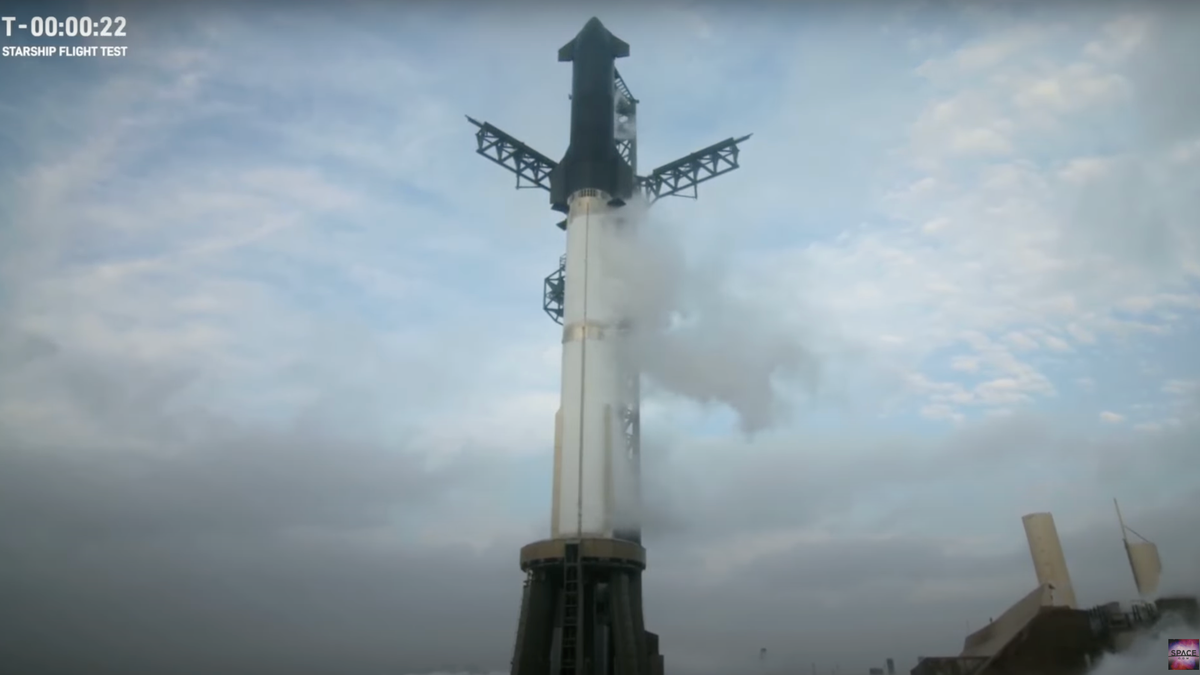SpaceX has had a heck of a time getting the worlds tallest, most powerful rocket off the ground. Starship rockets are mostly known for exploding and leaving craters at their launch pads while destroying delicate ecosystems. But the company finally got it right Thursday morning and sent the towering rocket into actual space. Coming back down to Earth, however, proved a little trickier.
The reusable rocket is meant to take astronauts to the moon in NASA’s Artemis II and III projects starting sometime in 2026, so time is running out to get this right. However, this is literal rocket science, and SpaceX is attempting to do something never done before: build a massive rocket, launch it into space, and retrieve it successfully. SpaceX has had success with the reusable Falcon 9, but Starship is an entirely different kettle of liquid fuel altogether.
While Starship slipped the surly bonds of Earth and touched the face of god to reach actual space, its return to the surly bonds of Earth was less straightforward, from Business Insider:
However, during its red-hot plummet back to Earth, Starship dropped out of communication with SpaceX, and the company shortly thereafter said the rocket had been lost.
It’s possible that the spacecraft was severely damaged or broken apart by the extreme temperatures created by its fall through the atmosphere, as it traveled at more than five times the speed of sound.
Regardless, today’s launch is a huge win for the company.
“This is failing forward at its finest. One of SpaceX’s secret sauces is an acceptance of failure as a means to an end,” Eric Berger, senior space editor at Ars Technica, posted on X.
It’s true, this failure of an ungodly expensive rocket is actually a good thing; it shows progress in SpaceX’s handling of the giant powerful rocket and the crash landing is also a valuable data point of what to work on next for the space-faring company.
Last year, SpaceX had two Starships fail to reach the stratosphere, instead one blew up on the launch pad, while a second exploded mid-air. SpaceX had similar fits and starts with the Falcon 9 rockets, which now go up and touch down with such regularity it’s not even a news story anymore. However the problems with Starship have given NASA officials some concerns ahead of the Artemis II and III missions, which include living, breathing astronauts onboard, according to Space.com:
The Artemis 3 landing, along with the Artemis 2 round-the-moon mission which will have astronauts onboard as well, was delayed in January due to several technical issues that included Starship delays. Artemis 3 will now land in 2026 at the earliest, a year later than planned, while Artemis 2 is launching nine months later in September 2025.
SpaceX’s progress with Starship has been a concern for NASA for quite a while. NASA associate administrator Jim Free said in June 2023, for example, that SpaceX will need to finish “a significant number of launches” successfully before the agency gives the green light for Artemis.
In its Tuesday update, NASA officials noted SpaceX has finished “more than 30 HLS specific milestones” regarding hardware ranging from generating power and developing a guidance and navigation system, to mechanisms for propulsion, life support and protection from space’s harsh environment.
Hopefully Starship can get up and down smoothly in time for a proper Moon mission. Humanity hasn’t had boots in the dust since 1972.







